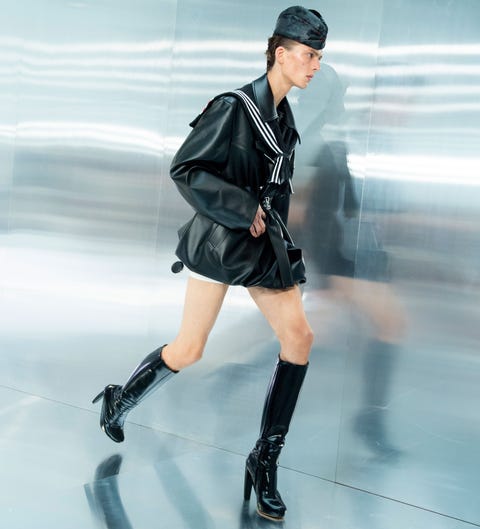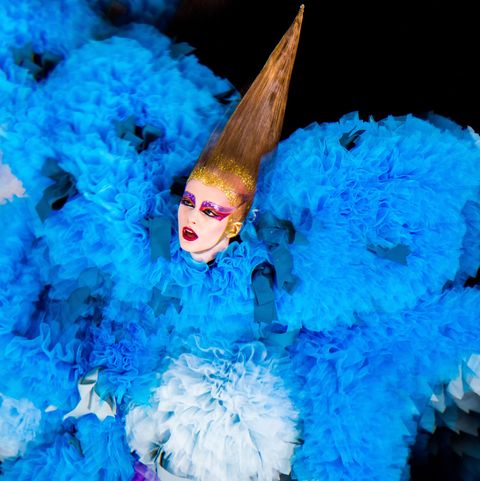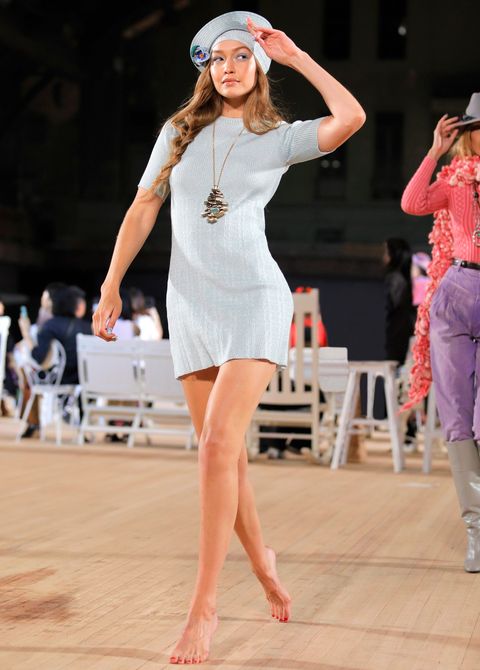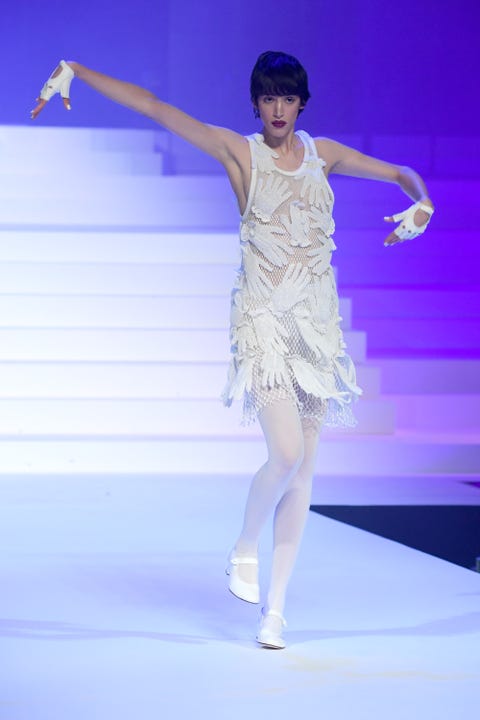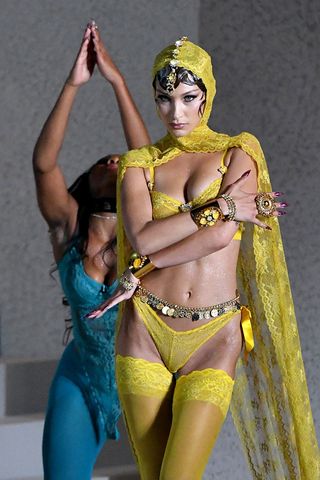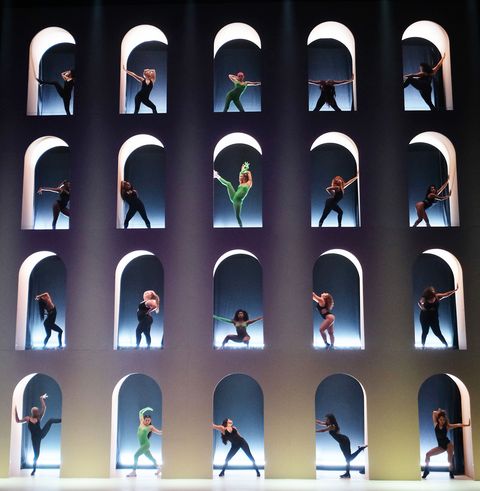One of the most viral moments of fashion month—aside from J.Lo at Versace in a re-creation of the neckline-down-to-there Grammys dress that launched Google Images—was the model Leon Dame stomping down the runway at the Maison Margiela show in Paris. It was the walk that got everyone talking: chaotic, hunched, and slightly rushed. It went viral and netted Dame an extra-special Instagram follower: Rihanna.
The man behind it was movement director Pat Boguslawski, a former model who has worked with Margiela since 2018. And though it garnered its share of laughs, it was, at its core, a performance that harked back to a time of theatricality on the runway, something John Galliano has incorporated into his shows since his early days. “If [it’s supposed to be] a fashion show, why are we watching a street walk?” says Boguslawski of his philosophy. “There should be some sort of performance, so we can see these characters.”
When supermodels ruled the world, you could pick them out by their signature gait. But as they got replaced by a revolving door of “new faces”—less expensive, easier to manage, and unlikely to outshine the brands they were walking for—the art of runway performance began to fade, replaced by a nondescript stalk down the runway. Gone were the pauses and twirls in the middle of the catwalk à la Thierry Mugler in the ’90s, or the pantomime-style acting of Galliano’s and Alexander McQueen’s early shows.
But this season, perhaps spurred by series like Pose and RuPaul’s Drag Race, the pendulum has swung back toward camp. Former Drag Race contestants Aquaria, Violet Chachki, and Miss Fame have become fashion demi-celebrities, sitting front row at the spring 2020 shows. Drag Race—in which contestants are encouraged to sell their performance as much as their looks—may have influenced avowed fan Marc Jacobs, whose models this season smiled, tipped their hats, and, in the case of Gigi Hadid, did a barefoot walk in imaginary high heels.
Ariel Nicholson, the sole model at Tomo Koizumi’s show, vamped it up while getting into and out of seven Japanese polyester organza looks. With the audience steps away, armed with their phones, she stalked around the room—her movement was also coached by Boguslawski—and posed, never breaking character. It felt like a Drag Race mini-challenge set at New York Fashion Week.
The ballroom community Pose depicts has also left an indelible impression on the catwalk: Paris Is Burning star and ballroom stalwart Willi Ninja is said to have coached Naomi Campbell and Iman on their walks; Pose consultant José Xtravaganza has worked with Joan Smalls and Kendall Jenner. The spirit of Pose truly came alive at Christopher John Rogers’s debut show, where models sashayed down the runway—with one stopping to apply a dainty wrist to the forehead for the photographers’ shots—and twirled, showing off the flow of their garments.
In a fashion schedule that’s brimming over with shows, incorporating this kind of theater helps brands stand out. And of all the evocative fashion moments, Rihanna’s might have been the most ambitious performance of all. Her Savage x Fenty blowout was almost directly reminiscent of ’90s Mugler, with lavish sets, performances by Halsey and Normani, and a star-studded lineup of models taking full advantage of the theater-style space.
In one widely viewed clip from the show, Normani and a group of dancers pop their chests to Sean Paul’s “Get Busy.” Thanks to the frenetic choreography by Parris Goebel, who has worked with Janet Jackson and Justin Bieber, Rihanna’s designs have never looked better. Integrating performance into a show is ultimately about selling not only a fantasy, but also, more prosaically, clothes. And on that count, Rihanna scored 10s across the board.
This article appears in the February 2020 issue of ELLE.
Top photo: A look from Christopher John Rogers’ spring 2020 collection. Christopher John Rogers Video Credit: Hudson Brown

